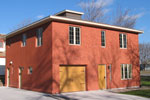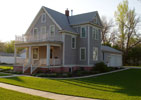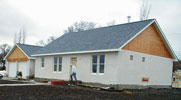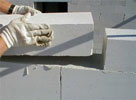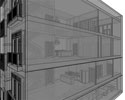Green Building
- Overview
- No Chemicals
- Rainfall Management
- Certification
- Life Cycle
- Materials
AAC uses only about 1/4 to 1/5 as much concrete as a solid concrete wall. All AAC waste generated during the manufacturing process is recyclable. No harmful chemicals are needed to produce AAC. At the end of an AAC building’s useful life, potentially several hundred years, it can be recycled or crushed for fill under buildings or roads.
We will be working to obtain LEED (Leadership in Energy and Environmental Design) certification through the U.S. Green Building Council for all our construction projects. The design and materials for our row house condominiums are excellent candidates because of the efficiencies of thermal mass, elimination of formaldehyde containing materials, a live green roof and more.
Information about the many different types of insulation and between AAC http://www.eere.energy.gov/consumer/your_home/insulation_airsealing/index.cfm/mytopic=11510
Green Roofs
Roof design depends on the style of building desired. We chose a truss system set on the wall bond-beam because of a local truss company. The ideal roof would be a European design using AAC roof panels covered by clay or cement tiles, slate, or a metal roof. The gable ends and dormers can be finished on the outside with wood shingles, cement siding, etc.
Low VOC Paints
AAC is made from silica sand, cement, lime, aluminum powder and water. The cement, lime, aluminum and water react to form hydrogen bubbles, which is where it gets the term "aerated." Because AAC is beathable, the hydrogen disapates during the steam cooking period in the autoclave. The resulting product is essentially stone. There are no chemicals in AAC that will offgas over time, unlike the formeldahyde in most plywoods.
Flyash, a waste product from coal fired electicity generation, is sometimes substitued for a portion of the sand and cement. The advantage of using flyash is that it reduces the amount of cement required, thus reducing greenhouse gas emissions. Secondly, the flyash is typically buried in a landfill, so using it in AAC puts it to productive use.
Under development March 2008.
Pathnet.org has a list of green and healthy building certification programs.
The U.S. Green Building Council (USGBC) runs the Leadership in Energy and Environmental Design (LEED) Green Building Rating program. www.usgbc.org/LEED/
The Natural Resources Defense Council (NRDC) provides helpful information about the LEED programs www.nrdc.org/buildinggreen/leed.asp
Under development March 2008.
Under development March 2008.
